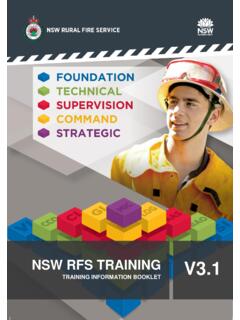Transcription of FACTORS INFLUENCING THE SELECTION OF TEACHING …
1 FACTORS INFLUENCING THE SELECTION OF TEACHING . METHODS IN AN EFL CONTEXT. By Kunti Adhikari A THESIS. Submitted to Michigan State University in partial fulfillment of the requirements for the degree of TEACHING English to Speakers of Other Languages - Master of Arts 2017. ABSTRACT. FACTORS INFLUENCING THE SELECTION OF TEACHING METHODS IN AN EFL CONTEXT. By Kunti Adhikari This study investigates the FACTORS INFLUENCING the SELECTION of English language TEACHING methods in a Nepalese EFL context. The Secondary Education Curriculum (grades 8, 9, and 10) of Nepal developed by Curriculum Development Centre, Ministry of Education, prescribes communicative language TEACHING (CLT) in an English language classroom.
2 However, in most of the cases, teachers experience difficulties in implementing learner centered TEACHING techniques due to several FACTORS prevailing inside and outside the classrooms. Therefore, sometimes they practice methods other than CLT. to teach English. This study surveyed those aspects, INFLUENCING the teachers' SELECTION of TEACHING methods in a Nepalese EFL setting. It also explored the perceived difficulties of English language teachers in the course of implementing CLT along with the strategies that the teachers have been practicing to overcome the existing problems in their English classrooms.
3 The data were obtained online from the English language teachers in Nepal by employing a questionnaire and a semi-structured Skype interview guideline as research tools. The information collected was reviewed and analyzed quantitatively as well as qualitatively. The findings of this research will help the policy makers and program developers in the Ministry of Education, Nepal to better understand the existing school level English language TEACHING (ELT) situation. ACKNOWLEDGEMENTS. I would like to extend my sincere thanks to the English language teachers in Nepal who participated in this research study and provided me with valuable data without which this study would not have been possible.
4 I would like to extend my sincere gratitude to my thesis supervisor and my professor Dr. Paula Winke for her constant guidance and advice throughout my MA TESOL journey and throughout this study. I am thankful to my academic advisor and my professor Dr. Charlene Polio, the second reader of my thesis, for her suggestions on the draft of this document. I acknowledge the direct and indirect support that I received from my professor Dr. Debra Hardison throughout the MA TESOL. program and firsthand information from her on research methodology.
5 I am thankful to the College of Arts and Letters for providing me with the fund for this study. I. will not miss this opportunity to thank my husband, Ram for his great support and for creating a favorable study environment throughout my MA TESOL program. My hearty thanks go to my son, Abhi for all his patience during my study. I would like to remember my inspiring and encouraging family members and friends for their direct and indirect support during my stay in the iii TABLE OF CONTENTS. LIST OF TABLES.
6 Vi LIST OF FIGURES .. vii INTRODUCTION .. 1. CHAPTER 1: LITERATURE REVIEW .. 2. Communicative Language TEACHING (CLT) .. 2. Barriers to CLT .. 3. Large Classroom .. 6. Washback .. 9. Teacher 11. Selecting Appropriate Methodology .. 14. FACTORS INFLUENCING the SELECTION of TEACHING Methods in an EFL Context .. 15. Research Context: ELT Situation in Nepal .. 18. 18. ELT 19. Student Assessment .. 20. Teacher Preparation .. 20. CLT in the Context of Nepal .. 21. Research Questions .. 22. CHAPTER 2: METHODOLOGY.
7 23. Method .. 23. 23. Tools .. 23. Procedure .. 25. CHAPTER 3: DATA ANALYSIS AND INTERPRETATION .. 26. FACTORS INFLUENCING the SELECTION of TEACHING Methods in Nepalese EFL Context .. 26. Problems Perceived by the Teachers in Implementing Communicative Language TEACHING .. 32. Strategies Practiced to Overcome the Problems .. 36. CHAPTER 4: SUMMARY OF RESULTS, DISCUSSION, RECOMMENDATIONS, AND. CONCLUSION .. 38. Summary of Results .. 38. Discussion .. 39. Recommendations .. 40. Conclusion .. 42. APPENDICES.
8 44. Appendix A: Questionnaire .. 45. Appendix B: Semi-structured Online Interview Guidelines .. 50. iv REFERENCES .. 51. v LIST OF TABLES. Table 1: Background Information of the Participants of the Study ..24. Table 2: Problems Experienced by the Teachers in a Large Size Classroom ..33. vi LIST OF FIGURES. Figure 1: FACTORS INFLUENCING the SELECTION of TEACHING Methods in Nepalese EFL. Context ..27. Figure 2: Problems Perceived by English Language Teachers in Implementing Communicative Language TEACHING .
9 32. vii INTRODUCTION. The school level (Grade 1-12) curriculum of Nepal introduced English as a compulsory foreign language in 2001, and it has been compulsory since then. The curriculum prescribes communicative language TEACHING (CLT) as a method to teach English. A syllabus has been designed with an intent to develop communicative competence among the learners. The textbooks and teachers' guide are prepared, and the teachers are trained so as to achieve the goals of CLT. Despite the government initiatives most of the teachers are still unable to practice CLT in a real sense as they are influenced by several contextual FACTORS (Adhikari, 2010; Karki, 2014, Khatri, 2010).
10 The curriculum may not always be implemented in the way the curriculum designers intended (Orafi & Borg, 2009). Although teachers in several Asian-Pacific countries (Chang, 2011) and East-Asian countries (Littlewood, 2007) have tried to employ CLT in a foreign language classroom in recent years, researchers have reported that a gap exists between ELT policy documents and the real practice of TEACHING and learning of English. This policy- TEACHING gap has been identified by the authors of several studies (Cook, 2010, Hu, 2005; Roy, 2016; Razmjoo & Riazi, 2006; Zhang & Liu, 2014).


